The Sunday Poem: “Soultrane” by George Held
Soultrane came out when Ike governed.
1958. Before our nation
Would build up its war machine to invade
Viet Nam, training its Green Berets
Soultrane came out when Ike governed.
1958. Before our nation
Would build up its war machine to invade
Viet Nam, training its Green Berets
A brief history of Rodgers and Hart’s composition “My Funny Valentine,” and a poem by George Held, who reflects on the song
...Richard Crawford’s Summertime: George Gershwin’s Life in Music is a rich and detailed musical biography that describes Gershwin’s work throughout every stage of his career. In a Jerry Jazz Musician interview, Crawford discusses his book and the man he has described as a “fresh voice of the Jazz Age” who “challenged Americans to rethink their assumptions about composition and performance, nationalism, cultural hierarchy, and the racial divide.”
...
1
Man is the animal that knows
the clarinet
makes his living
on the docks, a stevedore,
110lbs., carrying what loads
he can
the Depression comes along,
his teeth rot, no money and
he has to accept silence
The poets Terrence Underwood and George Held write about the jazz pianist Thelonious Monk
...“Community Bookshelf” is a twice-yearly space where writers who have been published on Jerry Jazz Musician can share information about their recently authored books.
...The 19 poets included in this collection effectively share their reverence for jazz music and its culture with passion and brevity.
...Earlier this year I invited poets to submit jazz-themed poetry that didn’t need to strictly follow the 5-7-5 syllabic structure of formal haiku, but had to at least be faithful to the spirit of it (i.e. no more than three lines, brief, expressive, emotionally insightful).
This collection, featuring 22 poets, is a good example of how much love, humor, sentimentality, reverence, joy and sorrow poets can fit into their haiku devoted to jazz.
...This edition features poetry chosen from hundreds of recent submissions, and from a wide range of voices known – and unknown – to readers of these collections. The work is unified by the poets’ ability to capture the abundance of jazz music, and their experience with consuming it.
...A collection in which over 30 poets communicate their appreciation for jazz music in poems no longer than seven lines.
...A broad collection of jazz poetry authored by an impressive assemblage of regular contributors and established poets new to this publication – all of whom open their imagination and hearts to the abundant creative experience they derive from this art.
...Over 60 poets from all over the world celebrate their love of jazz…in poetry.
...Molly Larson Cook’s abstract-expressionist paintings accompany the 50 poets contributing to this collection. Her art has much in common with the poetry and music found within it; all three art forms can be described as “landscapes of the imagination,” created by artists from all over the world who are inspired in a meaningful way by jazz music, and whose work can be uniquely interpreted and appreciated (or not!) by those who consume it.
...In this story – a short listed entry in our recently concluded 66th Short Fiction Contest – a private investigator tries to help a homeless friend after his saxophone is stolen.
...The story – a finalist in the 65th Short Fiction Contest – is about a young man who cares for his grandmother after she is discovered wandering in her neighborhood, which gives him a chance to be away from his mother and her new and intolerant partner.
.... . This space on Sunday is generally reserved for a single poet to read one of their works, but this week’s issue -Father’s Day – features 23 poets who weigh in on the complexity of their relationship with their father, revealing love, warmth, regret, sorrow – and in many cases a strong connection … Continue reading “The Sunday Poem(s): 23 Poets remember their father…”
...My high school girlfriend’s older brother
lived in a garret in the Village, like something
out of La Boheme, and she said maybe if we
went there, he’d leave us alone and we could
…well, you know
The introduction is excerpted from Tad Richards’ terrific book that explores the small group swing artists who made music from bebop to rhythm and blues.
...in this 2005 interview, Ben Green, author of Spinning the Globe: The Rise, Fall, and Return to Greatness of the Harlem Globetrotters, discusses the complex history of the celebrated Black touring basketball team.
...In a 2002 interview, Carla Kaplan, editor of Zora Neale Hurston: A Life in Letters, talks about the novelist, anthropologist, playwright, folklorist, essayist and poet whose work is is taught in American, African American, and Women’s Studies courses in high schools and universities from coast to coast.
...The author speaks with Bob Hecht about his book and his decades-long dedication to the genius of Pepper Adams, the stellar baritone saxophonist whose hard-swinging bebop style inspired many of the top-tier modern baritone players.
...In this interview, Alyn Shipton discusses Cab Calloway, whose vocal theatrics and flamboyant stage presence made him one of the country’s most beloved entertainers.
...A short story based on a recollection of the author’s mother from a night many years ago, when Gene Krupa’s sticks gave everything back its beat.
...This is the 14th extensive collection of jazz poetry published on Jerry Jazz Musician since the fall of 2019, when the concept was initiated. Like all previous volumes, the beauty of this edition is not solely evident in the general excellence of the published works; it also rests in the hearts of the individuals from diverse backgrounds who possess a mutual desire to reveal their life experiences and interactions with the music, its character, and its culture.
...An impeccably researched biography of an influential figure in American music, the goal of which is “to draw attention away from the circumstances surrounding Ayler’s death and bring it sharply back to the legacy he left behind.”
...The author discusses the iconic tenor saxophonist who is one of the greatest jazz improvisers of all time, a lasting link to the golden age of jazz
....This collection of jazz poetry – the largest yet assembled on Jerry Jazz Musician – demonstrates how poets who are also listeners of jazz music experience and interact with the spontaneous art that arises from jazz improvisation, which often shows up in the soul and rhythm of their poetic language.
...The winner of the the 61st edition of the Jerry Jazz Musician Short Fiction Contest is a story of reflection on a coming-of-age mentorship, gone awry.
...A discussion about the revolutionary, non-conformist poet Claude McKay’s complex early life that culminated in a pioneering role in American letters
...Carla Kaplan, editor of Zora Neale Hurston: A Life in Letters, talks about the novelist, anthropologist, playwright, folklorist, essayist and poet
...In a November 16, 2020 interview with Jerry Jazz Musician, Ricky Riccardi, author of Heart Full of Rhythm: The Big Band Years of Louis Armstrong, discusses his vital book and Armstrong’s enormous and underappreciated achievements during the era he led his big band.
...In an excerpt from his book Soundtrack to a Movement: African American Islam, Jazz, and Black Internationalism, Richard Brent Turner writes about Max Roach and his wife, the singer Abbey Lincoln, and the contributions they made to social justice, constructed in the intersecting worlds of African American Islam and jazz.
...December has once again produced a large number of year-end “Best Of” lists, and the goal of this post is to present those albums oft mentioned by the critics. While these 21 albums hardly constitute a comprehensive assessment of the “Best Of the ‘Best Of’” lists, it does provide some guidance about 2021 recordings critics seemed to agree about, and suggest we check out more thoroughly.
...“It’s not exclusive, but inclusive, which is the whole spirit of jazz.”
-Herbie Hancock
.
And…this spirit is not limited to the musicians, because celebrating jazz is rich in creative opportunity for writers and visual artists as well. The 54 poets who contribute to this poetry collection are living proof of that.
As always, thanks to the poets, and I hope you enjoy…
Joe
...In this edition, “Keeping Jazz Alive in the Desert,” Mr. Oakland’s photographs and stories focus on Monk Montgomery’s efforts to bring jazz to Las Vegas, and the notable jazz musicians who played in that city
...Few artists inspire creativity like Miles Davis. This collection of poetry by 50 poets from all over the world is evidence of that.
...A collection of the poet Erren Kelly’s unconstrained, improvisational and provocative poetry written during the era of COVID
...He drove uptown on Riverside Drive, the motor noise magnificent. Traffic increased as he approached Harlem. Other drivers jostling to get ahead noticed the car first. A red Ferrari was not subtle in gray Manhattan, and the engine roared money and power and European elegance. Then neighbors would study the man in outsized sunglasses. Some recognized him, smiling or shaking their heads in disbelief. Others looked aggrieved, even outraged that a person like him could be driving a vehicle like that. Ferrari only built three-hundred of their 275 GTB.
...In this excerpt from the books first chapter – published with the gracious consent of Papillote Press – Nanton writes about his initial meetings with the celebrated artist, and the 20th century currents that were important in shaping his individual talents and personality.
...In this winter collection of diverse themes and poetic styles, 55 poets wander the musical landscape to explore their spirit and enthusiasm for jazz music, its historic figures, and the passion, sadness, humor and joy it arouses.
.... . In a 2009 Jerry Jazz Musician interview, Robin D. G. Kelley, author of Thelonious Monk: The Life and Times of an American Original, talks about the legendary composer/pianist who was a founding father of modern jazz. . . .Robin D. G. Kelley, author of Thelonious Monk: The Life and Times of an … Continue reading “A Black History Month Profile: Thelonious Monk, a founding father of modern jazz”
...Author Dave Chisholm talks about the experience creating his graphic novel about Charlie Parker in California, “Chasin’ the Bird”
...“An Archaeologically Authenticated, Gastro-Musicological Historical Artifact: The Menu For The Jazz Brunch At Jack’s Tea Garden” is excerpted from a work-in-progress entitled “The Hip Man Letters, vol. 2: Dear Morty.”
...In this fifth collection of poetry reflecting these times, 33 poets offer their perspectives…
...Kevin Whitehead, the longtime jazz critic for NPR’s Fresh Air, discusses jazz music and the movies – the “natural allies” that both grew out of existing creative traditions, and, since the mid-1920’s have told stories about “child prodigies, naturals who pick up the music the first time they hear it, hard workers with a painstaking practice regimen, talented players diverted into soul-killing commercial work, and even non-improvisers taught to fake it.”
...The community of poets, writers, artists and photographers who have recently contributed their work and time to Jerry Jazz Musician to answer this question, “What one song best represents your experience with 2020?”
...All of a sudden, I began to experience an unusual perspiration. A perspiration that altered the rhythm of my heartbeat. The more the rhythm was thrown off, the more rapid my heartbeat pounded. I listened with displeasure as my heartbeat produced discordant tunes. The tunes were unpleasant to the ears.
...In a November 16, 2020 interview with Jerry Jazz Musician, Riccardi discusses his vital book and Armstrong’s enormous and underappreciated achievements during the era he led his big band.
...Jazz and poetry have always had a symbiotic relationship. Their creative languages share the common soil of imagination and improvisation, from which their audiences discover inspiration and spirit, and perhaps even a renewed faith in life itself.
This collection features 50 gifted poets from places as disparate as Ohio and Nepal, Estonia and Boston, Guyana and Pittsburgh, each publicly sharing their inner world reverence for the culture of jazz music.
...On the cusp of an election of consequence the likes of which America hasn’t experienced for 150 years, and in the midst of continued Black Lives Matter protests and an indisputable surge of COVID, 29 poets sharing perspectives from all over the world contribute to this volume of poetry reflecting our tumultuous, unsettling era…
...“Album Unfinished,” a story by Geoffrey Polk, was a short-listed entry in our recently concluded 54th Short Fiction Contest. It is published with the permission of the author
...23 poets contribute 26 poems that speak to the era of COVID, Black Lives Matter, and a heated political season
...His face gave it away. Standing in front of the painting, his ice-blue eyes like tiny bejewelled pinpricks, mouth gaping and tongue hanging out, he basked in the portrait’s aura like a skinned lizard under a desert sun.
...In a Jerry Jazz Musician interview with The Letters of Cole Porter co-author Dominic McHugh, he explains that “several of the big biographical tropes that we associate with Porter are either modified or contested by the letters,” and that “when you put together these letters, and add our quite extensive commentary between the letters, it creates a different picture of him.” Mr. McHugh discusses his book, and what the letters reveal about the life – in-and-out of music – of Cole Porter.
...Irving Berlin biographer James Kaplan talks about Berlin’s unparalleled musical career and business success, his intense sense of family and patriotism during a complex and evolving time, and the artist’s permanent cultural significance.
...From the Jerry Jazz Musician archives, in a March, 2003 interview, David Colley, author of Blood For Dignity: The Story of the First Integrated Combat Unit in the U.S. Army, talks about the integration of the United States military, and about the courage of African American soldiers determined to achieve success before and after World War II.
...Gary Giddins, Jimmy Heath, Fred Hersch, Joe Hagan, Maxine Gordon, Tim Page, Veronica Swift and Marcus Strickland are among the 25 writers, musicians, poets, educators, and photographers who responded to our question, “What are some of your favorite record album covers of all time?”
...Mary Schmidt Campbell, author of .An American Odyssey: The Life and Work of Romare Bearden,discusses the remarkable life of this important American artist in a Jerry Jazz Musician interview.
.... . “If you can dance at all, you can dance to [Guy] Lombardo’s music,” the Metronome writer George T. Simon wrote in 1942. The Lombardo band’s popularity was once so immense and widespread that he set attendance marks wherever he went, including at Harlem’s Savoy Ballroom. His appeal came despite what Simon described as … Continue reading “Guy Lombardo, “about as artistically creative as the average comic book””
...Near the end of high school I thought myself sophisticated, a fan of Pink Floyd and King Crimson and Kevin Ayers, but at a Weather Report Concert in 1972 I had a nearly religious conversion. It was as though a stranger had run up to me and said, “hold this for minute” and ran off. Then the music exploded. I had never heard anything like this. Everything changed.
It was as though I grew hair in secret places and a new appendage. I became a different creature. After that night few of my suburban DC white friends’ guitar and lyrics-oriented ears could hear what mine could; the joy and heartbreak in this unfamiliar and ebonic timbre, this canvas painted in horn, acoustic bass, and polyrhythm; this blues, this brokenness, this homesickness.
There it was, though, for anyone who had ears for it—there, in the absence of verse, in the uncertainty and unpredictability of lengthy solos, in the timelessness of power beyond the moment from which
...She was born into a family of musicians. Her father had played bass in a jazz band and traveled with Dizzy until an accident had cost him his arm and his career. Getting out of a limousine that had stalled on the highway en route to a gig in Chicago, he opened the car door to get out at the wrong time, just as a truck was passing.
“C’est la vie” he always said about that, as if it meant something. He had to go on, a musician without a limb, without his instrument, because he was a man and had children and a legacy to uphold through them, but inside, where nothing touched him, he felt as torn as his shoulder had been that night. Something had shifted. Only his wife, his gentle, meek and attendant wife who saw him sitting at the edge of their bed each night head bowed counting his blessings, all but one, only she knew what
...In addition to co-founding the New York Jazz Quartet, in 1970 this pianist was given knighthood by the President of Liberia in recognition for a series of concerts held to benefit Liberian children. Who is he?
John Lewis
Roland Hanna
Mal Waldron
Tommy Flanagan
Dave McKenna
Randy Weston
Go to the next page for the answer!
...“If you can dance at all, you can dance to [Guy] Lombardo’s music,” the Metronome writer George T. Simon wrote in 1942. The Lombardo band’s popularity was once so immense and widespread that he set attendance marks wherever he went, including at Harlem’s Savoy Ballroom. His appeal came despite what Simon described as the band’s “exaggerated sax vibratos, the clippety brass phrases with their illegitimate tones…and the style of singing that lets you hear all consonants and no vowels,” leading to what some musicians would ridicule as being “about as artistically creative as the average comic book.”
But, as Simon wrote in the chapter on Lombardo from his essential 1967 book The Big Bands, “Lombardo believed implicitly in his music, and he succeeded handsomely in selling it to two generations of dancers.”
For many of us born in the years following World War II – raised culturally by the likes of
...“Reminiscing in Tempo” is part of a continuing effort to provide Jerry Jazz Musician readers with unique forms of “edu-tainment.” As often as possible, Jerry Jazz Musician poses one question via e mail to a small number of prominent and diverse people. The question is designed to provoke a lively response that will potentially include the memories and/or opinion of those solicited.
This edition asks the question “What are 3 or 4 of your favorite jazz record albums of the 1960’s?” Respondents include the musicians John McLaughlin, Vijay Iyer, Warren Wolf, Jane Ira Bloom, Don Byron, Robin Eubanks, and journalists Gary Giddins, Dan Morgenstern, Terry Teachout, Neil Tesser, John Goodman and lots more…
...In memory of George Lewis, Great Jazzman
1
Man is the animal that knows
the clarinet
makes his living
on the docks, a stevedore,
110lbs., carrying what loads
he can
In cooperation with Frank Driggs and Chuck Haddix, authors of Kansas City Jazz: From Ragtime to Bebop — a look at the fascinating historyof Kansas City’s golden age through book excerpts, photos and music
...“The piano ain’t got no wrong notes!” So ranted Thelonious Sphere Monk, who proved his point every time he sat down at the keyboard. His angular melodies and dissonant harmonies shook the jazz world to its foundations, ushering in the birth of “bebop” and establishing Monk as one of America’s greatest composers. Yet throughout much of his life, his musical contribution took a backseat to tales of his reputed behavior. Writers tended to obsess over Monk’s hats or his proclivity to dance on stage. To his fans, he was the ultimate hipster; to his detractors, he was temperamental, eccentric, taciturn, or childlike. But these labels tell us little about the man or his music.
...Coltrane, Dig?
I suppose what it is with trane and me is
he takes all the time he wants to take
even outside of time, sidereal time,
stardust time, bessie blue time,
Take Five: The Public and Private Lives of Paul Desmond is the story of a jazz artist who transcended genres to establish one of the most immediately recognizable sounds in all of music. Long before his success as the alto saxophonist with the Dave Brubeck Quartet, decades before he wrote “Take Five ,” Desmond determined that he would be himself, never a disciple or an imitator, whatever the cost.
...Clad in white tie and tails, dancing and scatting his way through the “Hi-de-ho” chorus of “Minnie the Moocher,” Cab Calloway exuded a sly charm and sophistication that endeared him to legions of fans.
In Hi-de-ho, author Alyn Shipton offers the first full-length biography of Cab Calloway, whose vocal theatrics and flamboyant stage presence made him one of the highest-earning African American bandleaders. Shipton sheds new light on Calloway’s life and career, explaining how he traversed racial and social boundaries to become one of the country’s most beloved entertainers.
...Leadbelly, Robert Johnson, Charley Patton — we are all familiar with the story of the Delta blues. Fierce, raw voices; tormented drifters; deals with the devil at the crossroads at midnight.
In an extraordinary reconstruction of the origins of the Delta blues, historian Marybeth Hamilton demonstrates that the story as we know it is largely a myth. The idea of something called Delta blues only emerged in the mid-twentieth century, the culmination of a longstanding white fascination with the exotic mysteries of black music.
...Upon being traded to the Philadelphia Phillies in 1969, Curt Flood, an All-Star center fielder for the St. Louis Cardinals, wanted nothing more than to stay with St. Louis. But his only options were to report to Philadelphia or retire. Instead, Flood sued Major League Baseball for his freedom, hoping to invalidate the reserve clause in his contract, which bound a player to his team for life.
...Featuring the complete text of chapter 4 rom “Hear Me Talkin’ To Ya: The Story of Jazz As Told By the Men Who Made It”, a 1955 book by Nat Shapiro and Nat Hentoff
...“Reminiscing in Tempo” is part of a continuing effort to provide Jerry Jazz Musician readers with unique forms of “edu-tainment.” As often as possible, we pose one question via e mail to a small number of prominent and diverse people. The question is designed to provoke a lively response that will potentially include the memories and/or opinion of those solicited.
When you were growing up, what were three or four of your parents’ favorite recordings?
Featuring Dee Dee Bridgewater, Hubert Laws, Jacky Terrasson, Jimmy Owens, Kurt Elling and others…
...“Reminiscing in Tempo” is part of a continuing effort to provide Jerry Jazz Musician readers with unique forms of “edu-tainment.” As often as possible, we pose one question via e mail to a small number of prominent and diverse people. The question is designed to provoke a lively response that will potentially include the memories and/or opinion of those solicited.
What do you recall about the first live music performance you ever attended?
Featuring Alan Broadbent, Cyrus Chestnut, Dave Frishberg, David Evanier, and others…
...Stanley Crouch — MacArthur “genius” award recipient, co-founder of Jazz at Lincoln Center, National Book Award nominee, and perennial bull in the china shop of black intelligentsia — has been writing about jazz and jazz artists for over thirty years. His reputation for controversy is exceeded only by a universal respect for his intellect and passion. As Gary Giddins notes: “Stanley may be the only jazz writer out there with the kind of rhinoceros hide necessary to provoke and outrage and then withstand the fulminations that come back.”
...Kansas City Jazz: A Pictorial Tour _____ In cooperation with Frank Driggs and Chuck Haddix, authors of Kansas City Jazz: From Ragtime to Bebop — a look at the fascinating history of Kansas City’s golden age through book excerpts, photos and music * All photos and book excerpts used with the permission of Frank Driggs, … Continue reading “Kansas City Jazz: A Pictorial Tour”
...On New Year’s Eve 1972, following eighteen magnificent seasons in the major leagues, Roberto Clemente died a hero’s death, killed in a plane crash as he attempted to deliver food and medical supplies to Nicaragua after a devastating earthquake. Author David Maraniss now brings the great baseball player brilliantly back to life in
Excerpted from Dream Boogie: The Triumph of Sam Cooke, by Peter Guralnick
Jerry Brandt got them all tickets for the Clay-Liston fight in Miami on February 25. Allen brought his wife, Betty, Sam took Barbara, and J.W. came by himself, with Allen arranging for accommodations at Miami’s resplendent Fountainebleau Hotel. Allen had already registered and was in his room when Sam arrived, only to be told that there had been a mix-up about the reservations. It was not as blatant as Shreveport,
...There were but four major galaxies in the early jazz universe, and three of them — New Orleans, Chicago, and New York — have been well documented in print. But there has never been a serious history of the fourth, Kansas City, until the recent publication of Kansas City Jazz: From Ragtime to Bebop — A History, by Frank Driggs and Chuck Haddix.
...Before Wilt Chamberlain, Bill Russell, Julius Erving, or Michael Jordan — before Magic Johnson and Showtime — the Harlem Globetrotters revolutionized basketball and spread the game around the world. In Spinning the Globe: The Rise, Fall, and Return to Greatness of the Harlem Globetrotters, author Ben Green tells the story of this extraordinary franchise and iconic American institution.
...Excerpted from Spinning the Globe: The Rise, Fall, and Return to Greatness of the Harlem Globetrotters, by Ben Green
In 1948, George Mikan, the six-foot-ten center of the Minneapolis Lakers, was dominating the sport like no other big man ever had. When Mikan had first arrived at DePaul University in 1942, he was a clumsy, slow-footed freshman who was so blind (with 20/300 vision) that, even wearing Mr. Magoo glasses, he had to ask teammates to read the game clock. But first-year DePaul coach Ray Meyer recognized the youngster’s fierce competitiveness, and put him through a rigorous, unorthodox, training program: he made him shoot thousands of hook shots with either hand, hired a female dance instructor to improve his footwork,
...At the height of the ideological antagonism of the Cold War, the U.S. State Department unleashed an unexpected tool in its battle against Communism: jazz. From 1956 through the late 1970s, America dispatched its finest jazz musicians to the far corners of the earth, from Iraq to India, from the Congo to the Soviet Union, in order to win the hearts and minds of the Third World and to counter perceptions of American racism.
In Satchmo Blows Up the World: Jazz Ambassadors Play the Cold War, Penny Von Eschen escorts readers across the globe, backstage and onstage, as Dizzy Gillespie, Louis Armstrong, Duke Ellington, and other jazz luminaries spread their music and their ideas further than the State Department anticipated.
...Just after World War I, the musical style called jazz began a waterborne journey outward from that quintessential haven of romance and decadence, New Orleans. For the first time in any organized way, steam-driven boats left town during the summer months to tramp the Mississippi River, bringing an exotic new music to the rest of the nation. For entrepreneurs promoting jazz, this seemed a promising way to spread northward the exciting sounds of the Crescent City. And the musicians no longer had to wait for folks upriver to make their way down to New Orleans to hear the vibrant rhythms, astonishing improvisations, and new harmonic idioms being created.
...“I suppose you could say that the seeds of my next book, a full-length biography of Louis Armstrong, were planted three years ago, when I was writing an essay for the New York Times about Armstrongs centenary in which I called him “jazz’s most eminent Victorian,” Terry Teachout wrote in his August 17, 2004 Arts Journal blog.
Three years after the Times piece was published, he took a tour of the Louis Armstrong House in Queens and came away with the enthusiasm required of such an endeavor.
...Buying a vinyl long playing jazz album in the format’s heyday — from the 1950s through the 1980s — was a three-step sensual process that stirred an almost irrational enthusiasm for the entire culture the music ignited. The record industry’s flair for creating passionate cover art seduced the imagination, the sounds etched into the grooves promised diversion and surprise, and the densely-typed liner notes on the back cover fired up an eagerness for enlightenment. The process continued at the turntable, where the cut of a stylus transformed the listener into an aural witness to the performer’s character and improvisational skills. It was, quite simply, a bonding experience.
...Jack Johnson was the first black heavyweight champion in history, the celebrated — and most reviled — African American of his age. Prizewinning biographer Geoffrey Ward tells Johnson’s story in Unforgivable Blackness, which reveals a far more complex and compelling life than the newspaper headlines he inspired could ever convey.
...In the final column of his thirty year career as jazz critic of the Village Voice, Gary Giddins wrote, “I’m as besotted with jazz as ever, and expect to write about it till last call, albeit in other formats. Indeed, much in the way being hanged is said to focus the mind, this finale has made me conscious of the columns I never wrote.”
...Illicit drugs have transfigured the American cultural landscape in the past half-century, leaving their mark on everything from art, music, literature, sexuality, spirituality, pop culture, the economy, and politics, to crime, public health, and national law enforcement policy. In Can’t Find My Way Home: America in the Great Stoned Age, 1945 – 2000, documentary filmmaker and writer Martin Torgoff traces the tangled trajectory of illegal drug use in America, as it spread post-World War II from the Beats and bebop musicians, all the way to the Ecstasy-fueled rave culture.
...Lost Sounds is the first in-depth history of the involvement of African Americans in the earliest years of recording. It examines the first three decades of sound recording in the United States, charting the surprising role black artists played in the period leading up to the Jazz Age.
Applying more than thirty years of scholarship, Tim Brooks identifies key black artists who recorded commercially in a wide range of genres and provides revealing biographies of some forty of these audio pioneers. Brooks assesses the careers and recordings of George W. Johnson, Bert Williams, George Walker, Noble Sissle, Eubie Blake, the Fisk Jubilee Singers, W.C. Handy, James Reese Europe, Wilbur Sweatman, boxing champion Jack Johnson, as well as a host of lesser-known voices.
...In the final column of his thirty year career as jazz critic of the Village Voice, Gary Giddins wrote, “I’m as besotted with jazz as ever, and expect to write about it till last call, albeit in other formats. Indeed, much in the way being hanged is said to focus the mind, this finale has made me conscious of the columns I never wrote.”
...Often overshadowed by San Francisco, its twinkling sister city across the Bay, Oakland is itself an American wonder. The city is surrounded by and filled with natural beauty — mountains and hills and lakes and a bay — and architecture that mirrors its history as a Spanish mission, Gold Rush outpost, and home of the West’s most devious robber barons.
Oakland is also a city of artists and blue-collar workers, the birthplace of the Black Panthers, neighbor to Berkeley, and home to a vibrant and volatile stew of immigrants and refugees.
...“Fire in a Canebrake” is a phrase Walton County, Georgians used to describe the sound of fatal gunshots, and the title of Laura Wexler’s critically acclaimed book on the Moore’s Ford lynching of 1946, the last mass lynching in America.
While the book is a moving and frightening tale of violence, sex and lies, it is also a disturbing snapshot of a divided nation on the brink of the civil rights movement and a haunting meditation on race, history, and the struggle for truth.
...When liberal Republican John Lindsay was elected mayor of New York in 1965, political observers described him as a White Knight, the best hope for a stagnant and troubled city. A reformer with movie-star looks, Lindsay brought glamour and hope to City Hall. At the height of his appeal, leading politicians from both parties, including Nelson Rockefeller and Robert Kennedy, feared Lindsay’s growing popularity. Some even pegged him for the White House.
...Prior to the closing months of World War II, American military doctrine had long held that blacks were inferior fighters who fled under fire and lacked the intelligence, reliability, and courage of white fighters. That changed in early March 1945, when, for the first time, more than two thousand African-American infantrymen entered the front lines in Germany to fight alongside white soldiers in infantry and armored divisions engaged in the final battles of World War II in Europe.
...Alice Walker’s 1975 Ms. magazine article “Looking for Zora” and Robert Hemenway’s 1977 biography reintroduced Zora Neale Hurston to the American landscape and ushered in a renaissance for a writer who was a bestselling author at her peak in the 1930’s, but died penniless and in obscurity some three decades later.
Since that rediscovery of novelist, anthropologist, playwright, folklorist, essayist and poet Hurston, her books — from the classic love story Their Eyes Were Watching God to her controversial autobiography, Dust Tracks on a Road — have sold millions of copies. Hurston is now taught in American, African American, and Women’s Studies courses in high schools and universities from coast to coast.
...Lenny Bruce’s words had the power to provoke laughter and debate — as well as shock and outrage. It was the force of his voice that would place him on the wrong side of the law in San Francisco, Los Angeles, Chicago and New York.
Lenny committed his life to telling the truth. But the truth he told infuriated those in power, and authorities in the largest, most progressive cities in the country worked effortlessy to put him in jail. To them, Lenny’s words were filthy and depraved. But to his friends — the hip, the discontented, the fringe — his words were not only sharp and hilarious, they were a light in the dark to the repressed society of the early 1960’s.
...In Stardust Melodies: A Biography of Twelve of America’s Most Popular Songs, author Will Friedwald takes these legendary songs apart and puts them together again, with unprecedented detail and understanding. Each song’s history is explored — the circumstances under which it was written and first performed — and then its musical and lyric content.
...When Gary Giddins, the jazz critic and columnist for the Village Voice, began work on an in-depth biography of Bing Crosby, many asked him, “Why?” He has explained that Crosby, perhaps the most famous entertainer in America between 1927 and 1956, has been unjustly forgotten since his death in 1977.
...Few enthusiasts and scholars would argue the place trumpeter Clifford Brown holds in jazz history. His work, sadly cut short by his death in 1956, is dramatic, creative, revered. Until now, there has not been a body of work on his life to better acquaint us with his play, his life in and out of jazz, and his enthusiasm for life. Author Nick Catalano, whose love for Brownie had its beginnings at age 14 when he briefly shared a bandstand with him, has given us Clifford Brown : The Life and Art of the Legendary Jazz Trumpeter, a critically-acclaimed, newly released biography
...

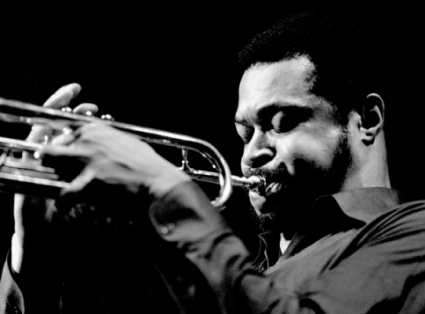
”Every Time” by Michel Krug
The Sunday Poem is published weekly, and strives to include the poet reading their work.... Michel Krug reads his poem at its conclusion
Click here to read previous editions of The Sunday Poem


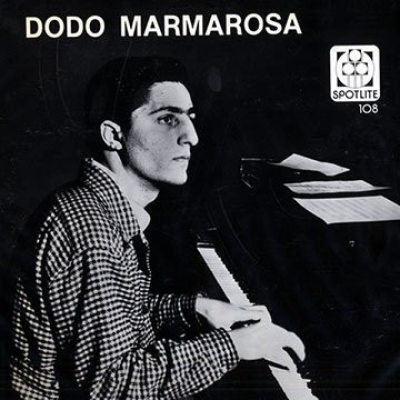
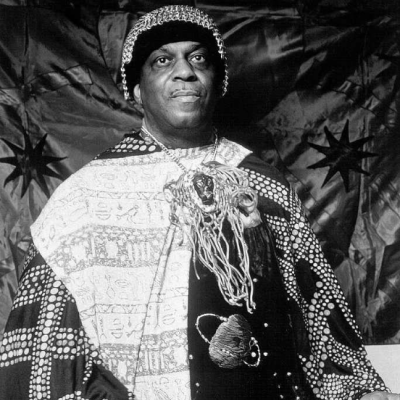
Click here to read more short fiction published on Jerry Jazz Musician
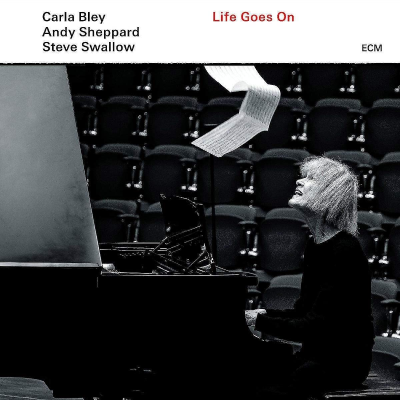

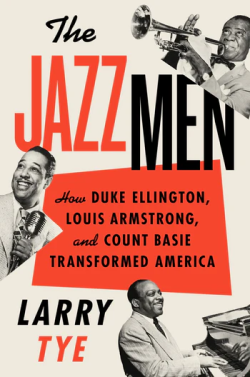
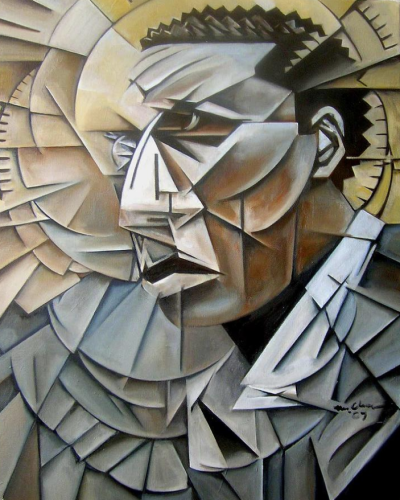
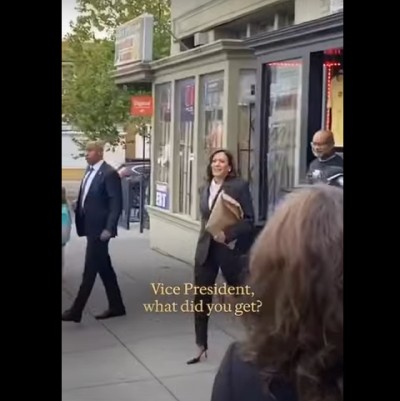

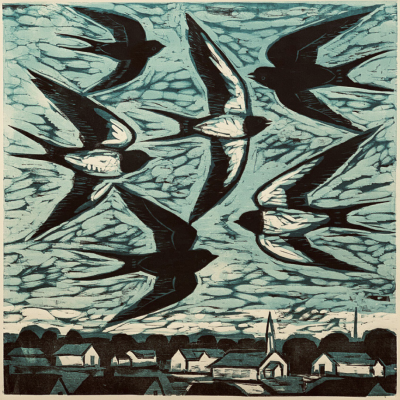
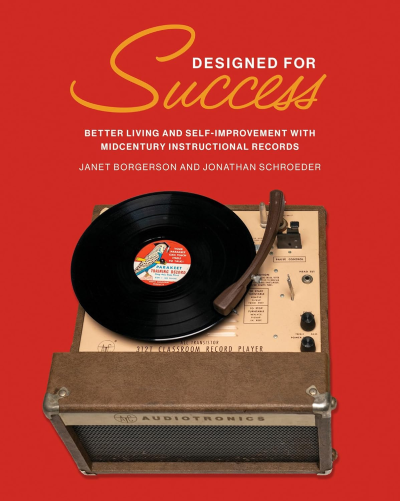
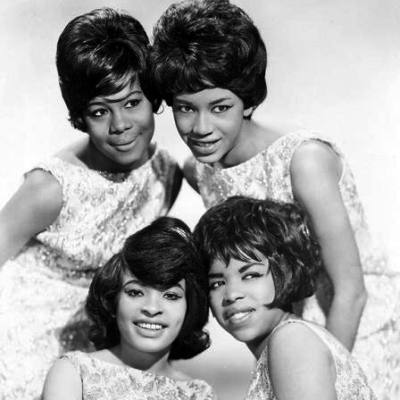

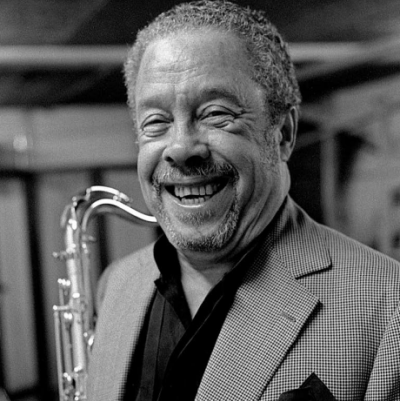
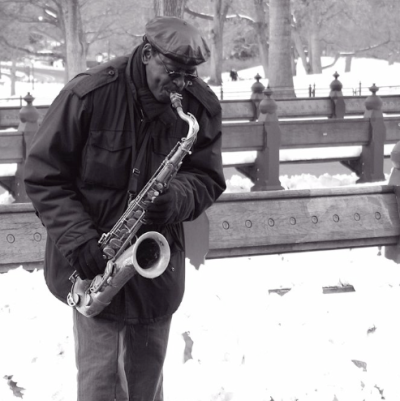
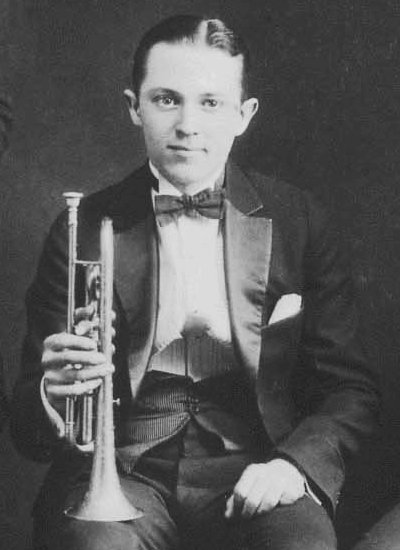
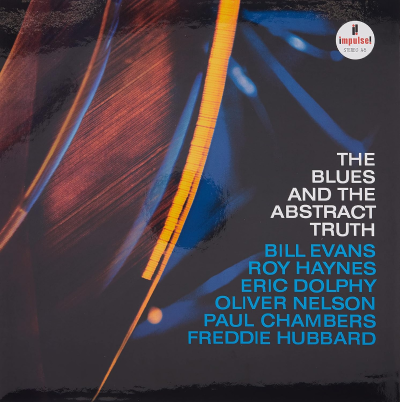
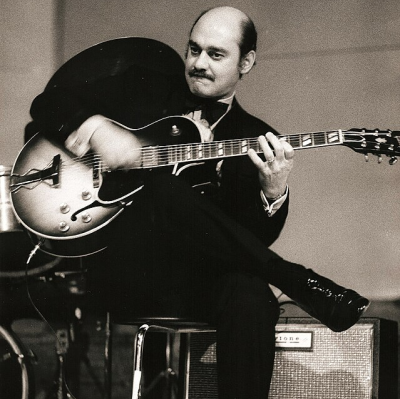
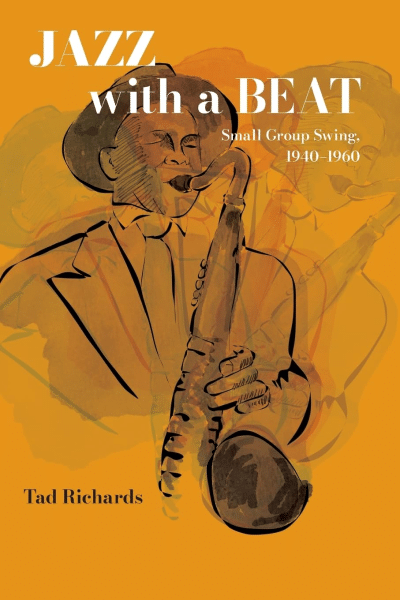
Click here to read more book excerpts published on Jerry Jazz Musician
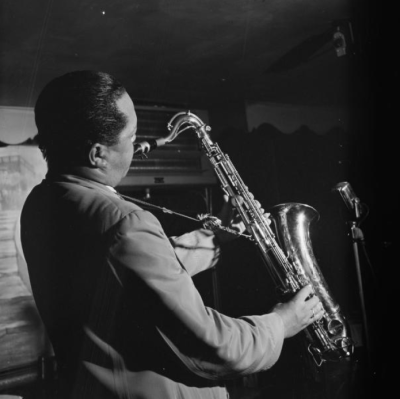
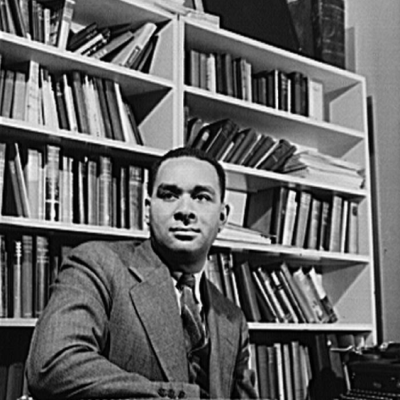




Dear Readers:
Reader funding helps support the expense of publishing this website, and to keep it free of advertising – which is a rarity in the dot-com world. Many thanks to those who have recently contributed, and to those who have done so multiple times. Your support is very much appreciated.
If you are able, please consider making a contribution? Information regarding how to do so is found by clicking here.
For viewing my long range vision for Jerry Jazz Musician, please click here.
Thank you!
Joe Maita
Editor/Publisher
,

